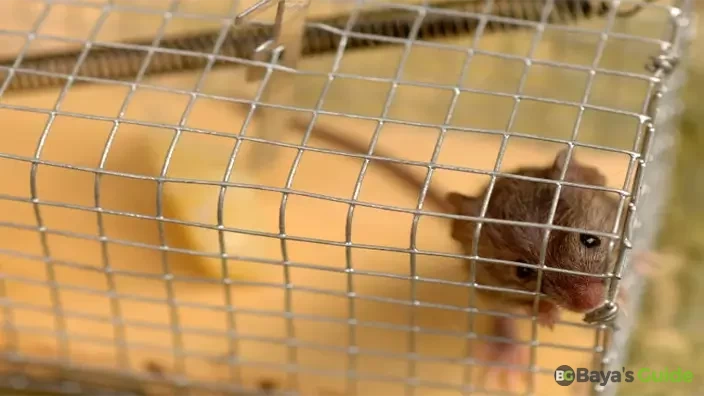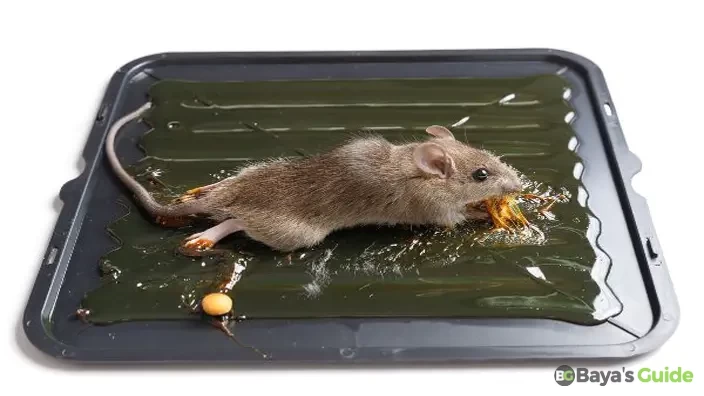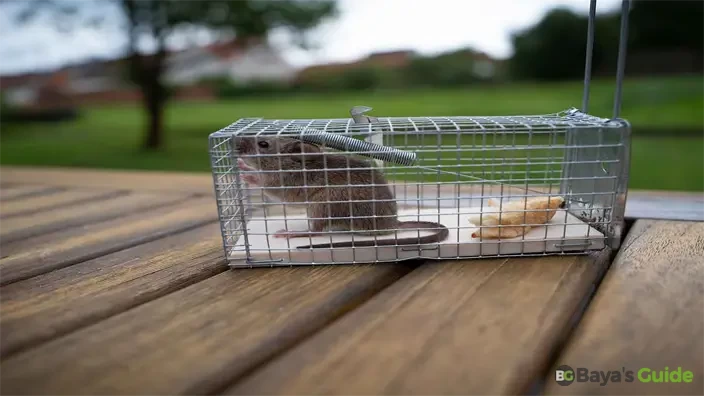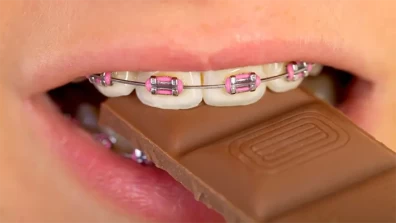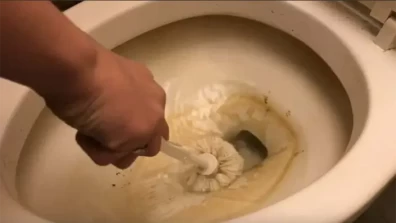Discovering unwanted rodents in your home can be an unsettling experience, prompting the need for swift and effective action. Using traps is a humane and practical way to catch rats, ensuring the safety of your household.
Rats are extremely unpleasant creatures that are prevalent everywhere in the world. No village, no country is free from the existence of rats as they coexist with humanity. Even though there are countless mouse-killing drugs, you can’t get them away from human dwellings whether in urban, suburban, or rural areas. But during this battle between rat and man, we are successful in nothing but the effective trapping tools.
In this guide, we will explore a variety of traps and methods to help you successfully catch rats at home. Whether you prefer traditional snap traps, live traps, or electronic alternatives, understanding the options available will empower you to address the issue promptly and regain control of your living space.
Table of Contents
- Indoor Rat Control: Helpful Tips For Successful Rodent Capture
- 1- Set The Rat Traps
- 2- Bait As Per The Rat's Diet
- 3- Create Trust In Rats To Trap
- 4- Stop The Rats From Invading
- 5- Poison-Free Bait
- 6- Use The Right Rat-Trap As Per Size
- 7- Wear Gloves Before Holding Rat Traps
- 8- Use Electronic Rat Traps For Indoor Solutions
- 9- Use As Many Traps As Needed
- 10- Position Traps Individually Adjacent To The Wall
- 11- Trap The Rats Outside Your Residence
- 12- Use Rat Zapper Ultra - Your Solution For Rat Control
- 13- Trap Rats Outdoor To Prevent Repopulation
- 14- Bigger Operations Held In Bigger Buildings
- 15- Use Instant Kill Rat Traps
- Why Are Rat Traps Ideal?
- Essential Safety Measures For Rat Trapping
- Frequently Asked Questions
- Conclusion
Indoor Rat Control: Helpful Tips For Successful Rodent Capture
1- Set The Rat Traps
Rats dwell in the low-light areas or corners of the house by instinct and avoid roaming in the open setting of the room or courtyards. So, if you want to get rid of the mice from the room, place your traps in the low-light sides of the walls and hidden paths where the rats likely travel the most. To make the trapping process faster, and more effective, you should fix the traps inside the storage room as well as under the furniture articles such as cabinets, sofas, and chairs.
A clever trick to allure and trap the mice, you need to place a shoe box in the common passage of the rats but make holes in it. It’s great to throw some bait in the box to pique the rat’s interest with its cherished food put inside it. Furthermore, the box will help you carry the mouse outside as it will not come out if it goes in once.
2- Bait As Per The Rat's Diet
To trap the rat effectively, you need to bait it with its most cherished food. The bait depends upon the food species you have found missing and eaten in your kitchen. But some rats are known for different food types as black rats eat vegetables but brown rats instinctively like varied diets.
Black rats being herbivorous enter the house through cutting scale trees and nibble the wooden frames in attics. On the other hand, Brown rats hunt through the vegetables, and chicken snacks and make tiny cracks in the smelly cheese. Regardless of the rats' species whatever they are, they get attracted to strong smells of moldy cheese, fish, pieces of bread, and nuts- use them to lure rats to traps.
3- Create Trust In Rats To Trap
The rats though have tiny heads, but they can smell every new object in the human dwellings. To lure the rat with its favorite prey, you can't expect a rat to be trapped with a cold turkey putting it in the open. To make the rat with a trap, keep placing food items for a day or two without leaving a hook. After passing through the trap easily, the rat will feel safe with its regular turf, bait it one day to trap it.
4- Stop The Rats From Invading
This high-tech method will assist you greatly in preventing the mice from invading if you are not feeling comfortable killing them. You may fix rodent–free devices to prevent piercing oscillations away from the range of your attics leaving no rat carcass and no trap.
Using high-decibel sound devices to repel rats is a method that some people explore to deter these rodents from their living spaces. While there are devices marketed for this purpose, it's important to note that the effectiveness of ultrasonic or high-decibel sound as a rat repellent is a topic of debate. Here's a brief overview of the concept:
- How They Work - Ultrasonic rat-repellent devices emit high-frequency sound waves that are beyond the range of human hearing but are believed to be irritating for rodents.
- Placement - Install the devices in areas where rat activity is observed, focusing on entry points, nesting areas, or places where food sources are present.
- Consistency - For optimal effectiveness, these devices may need to be consistently operational. Some devices come with motion sensors that activate them when rodents are detected.
5- Poison-Free Bait
If you have fixed the bait to catch the rat, it doesn’t mean that the rat will surely be snapped every time. Very often it happens, the rat eats the bait with a trick without being snapped. If your stratagem fails to trap the rat once, simply try it a second time. It is not very important to add some slow-working poison into this snap trap to kill the rat.
Blending the poison with the foody article the rats preferred the most to bait them can create a lot of problems. For instance, if the rat drags the edible bait out of your house spreading the particle behind on your floor. These poisonous particles left on your flooring can be hazardous for you, the young ones walking barefoot, or for your pets as well, if you have them at home.
Moreover, if the rats die slowly going under some home goods, the rotting corpse creates an unbearable stink, and you are caught in difficulty finding and disposing of it. For the securest stratagem of catching a rat, you need to keep the bait in the center of the trap. Secondly, if your piece of prawn, for instance, you have used it to bait, is free of poison and the rat has left after nibbling once or twice, it is deleteriously harmful.
6- Use The Right Rat-Trap As Per Size
To choose the right rat trap based on tail size, consider using a snap trap for small to medium-sized rats from 2.5 to 4 inches and a larger trap, such as a rat glue board or electronic trap, for larger rats’ measures between 7 to 10 inches with longer tails. Tail size can be an indicator of the rat's overall size, helping you select an appropriate trap for effective capture.
The main trouble that occurs while trapping the rats is that most of the homeowners can hardly differentiate between the mice and the rats and the infestation spread by them or also the kinds of traps, they can use to snap them. By viewing the rats' paw prints typically round about 20mm in width, whereas the mice's paw sizes got from prints are normally 10mm wide.
Using a metal pedal mouse trap for catching rats might not be as effective, as rats are generally larger and stronger than mice. It's recommended to use a rat-sized snap trap with a larger trigger mechanism for better results. Rat traps are designed to handle the size and strength of rats, providing a more humane and efficient method of control.
7- Wear Gloves Before Holding Rat Traps
Your health is more important than anything else. So, before fixing the Victor®Power-Kill™ Rat Trap, it is indispensable to wear gloves before holding not only the rat corpse but also the trap-related articles. Another reason for wearing gloves is that the rats are prone to smell human existence from their prints even, so avoid touching the trap or bait with bare hands to keep your scent absent from the trap’s articles.
8- Use Electronic Rat Traps For Indoor Solutions
If the rat problem area is in the range of your home or office, you can use Victor® Electronic Rat Trap confidently and conveniently. It proves a great alternative to the snap traps conventionally used at homes for a long time. You can operate it by linking it with four C-size batteries. It can easily temp the rates to get inside, and the rats are instantly devoid of life with the first shock of 4,000-volt.
Fret not about the setting of The Victor® Electronic Rat Trap without applying any food bait. Be mindful, that about 50 rats can be killed with one set of batteries. You are informed about the rat killing with a single flash of light with no pain of checking or touching the rats.
Another innovative option Victor® offers operated with Wi-Fi is the Victor® Smart-Kill™ Electronic Rat Trap. This device is completely unique in its function as it is paired mobile device to receive a notification to empty the trap from the rat corpse without having tension to open and check it.
9- Use As Many Traps As Needed
If your problem is more severe than a single rat causing infestation around your dwelling territory, you can strategically fix the traps more than one at a time. This device is mostly used particularly in areas where no home article can attract rats towards them like your courtyard or garage. Fix several traps like a dozen or so along the less rat-friendly area as your backyard fence.
10- Position Traps Individually Adjacent To The Wall
It is vitally important to place the rat traps alongside the walls for two clever reasons: While they are searching for some edible them, they use one side of their whiskers to perceive the objects coming their way. IN like manners, they keep the other side of their whiskers touching to wall to guess whether they are traveling on the right path. They feel protected while walking beside the wall.
That is the reason, putting the trap alongside the wall at a 90-degree angle is the most effective tactic. If you fix the trap by the wall, place another trap parallel in the opposite direction. This trick helps you snapping the rat in either way it comes. Besides, you can place the traps at least at a distance of 15 feet.
11- Trap The Rats Outside Your Residence
If you notice a rat at your residence, it's likely because there is a rat population living near the house from where it finds it easier to invade your dwelling. The rat has found your house less secure having sealing gaps, and holes in the roof or walls. The thing to do as a priority is to fill the gaps to deny them entering your residence so conveniently.
For the illustration, the black rats usually enter from the roofs after overhanging the tree branches so trim the bush or tree adjacent to your house roof. After that spread the bait along the fence to snap trap to stop these rodents from entering your property. Moreover, fix the bait at the rafters, roof pipes, wires, or brancher clinging to the walls.
12- Use Rat Zapper Ultra - Your Solution For Rat Control
The Rat Zapper Ultra offers a humane and effective solution for trapping rats in your home. With its quick and powerful electric shock, it ensures a swift and painless kill, minimizing suffering. Designed for indoor use, it's a safe alternative to traditional snap traps or poison, reducing risks to children and pets. Easy disposal of rodents further reduces mess and disease transmission.
How To Use Rat Zapper Ultra?
Identify areas with rat activity, such as entry points, nests, or feeding locations, and strategically place the Rat Zapper Ultra in these spots. Apply a small amount of bait, like peanut butter or dry pet food, to attract rats into the trap. Follow the manufacturer's instructions to activate the trap and regularly check for captured rodents.
Dispose of rats safely according to the provided guidelines, ensuring minimal contact. Reset the trap as needed and repeat the process for continued effectiveness. Always adhere to manufacturer instructions for optimal results and safety. Regular monitoring and proper placement maximize the Rat Zapper Ultra's efficiency in addressing rat infestations at home.
You Might Be Interested:How To Get Butter Out Of Clothes
13- Trap Rats Outdoor To Prevent Repopulation
Planning to inhibit the rat groups, select a wide area to bait for rats as a bark, storage of grains, or other natural areas. Fix a large number of traps with the baits of their cherished food items like butter, leaves, or peanuts. After a couple of days, check the traps dispose of the corpses, and place further traps to eradicate their repopulation closing all the points gives the rodents a chance to repopulate. Seeing the Rat problem lingering ahead, you should redo it frequently for multiple days.
14- Bigger Operations Held In Bigger Buildings
Trapping and killing the rats in an office or factory area is harder than eliminating the rats at houses. If you notice the presence of rats on multiple floors, you need to find and eliminate the root cause of the problem. They can easily pass through minute places even such as air vents though they are covered with grills, basements, toilets, or drainage pipes. After identifying the access points, you need to fix traps on every vent hole instantly to eliminate these rodents.
After getting the idea of how the rats reside in the basement and how they trail away through the wall cavities, you should place traps along the office walls, hallways, and dark spaces. As the amount of infestation in the area, you should increase the number of traps.
15- Use Instant Kill Rat Traps
The best way of killing the rats is that which can kill them instantly, so they get trapped without suffering prolonged pain or throttle. For this, you can use electronic traps like Victor® Electronic Rat Trap or Rat Zapper Ultra Rat Trap without putting you in the trouble of holding the rat corpses. If the rat community is dwelling outdoors like in courtyards or lawns, you need to fix Victor® Easy Set® Rat Trap throughout the length of fences or walls. Be very alert about the thorough cleaning after emptying the traps from a particular place.
Why Are Rat Traps Ideal?
There are numerous ways to remove the rats from indoors and outdoors, but the tapping method is the favorite to all for the reasons given below:
1- Quick Results
Though the small traps are not actively applied for the large rodents, they provide you with instant results to get rid of the small infestations that you usually face at home.
2- Pesticide-Free Method
As the rat's uninviting arrival is a worldwide issue so there is a long list of chemical products available in the markets. Regarding these products, the issue is that they contain heavy amounts of dangerous toxic chemicals which are harmful to the environment especially where the kids and pets move around freely. So, the conventional traps are considered safe for the dwellers.
3- Immediate Disposal
Via these taps, the rodents are killed, and you can easily dump off the rat corpses straight away before the odor or other problems spread around relatively.
4- Safer Method
When the rats nibble a little only the chemicals containing baits and remain safe after that. They get riskier for the kids and pets if you have them at home. Conventional rat traps are the most beneficial methods for the elimination of rats and your home sanitization.
Essential Safety Measures For Rat Trapping
Certainly, here are some important tips for using different types of rat traps:
1- Snap Traps
- Position snap traps perpendicular to walls, with the baited end facing the wall. Rats tend to travel along edges.
- Deploy multiple traps to increase the chances of catching rats, especially in areas with high rodent activity.
- Apply a small amount of bait (peanut butter) on the trigger, ensuring the rat must interact with the trap to access the bait.
- Check traps regularly to remove caught rats promptly. This prevents decomposing rodents and maintains trap effectiveness.
- Handle snap traps with caution to avoid injury. Set them using the provided tools and keep your fingers away from the trap mechanism.
2- Electronic Traps
- Place electronic traps in areas of known rat activity, ensuring they are not obstructed.
- Apply bait to attract rats into the trap. Follow the manufacturer's guidelines for recommended baits.
- Ensure the electronic trap has a reliable power source and is turned on. Check regularly to avoid power interruptions.
- Remove captured rats promptly to maintain trap efficiency and hygiene. Some models may allow for no-touch disposal.
- Follow safety guidelines to prevent accidental shocks. Keep electronic traps away from water to avoid damage.
3- Glue Traps
- Position glue traps along known rodent pathways. Rats are more likely to step onto them when placed on their regular travel routes.
- Use bait in the center of glue traps to make them more enticing for rats.
- Immediately remove trapped rats to minimize their suffering and prevent escape attempts.
- Place glue traps in areas inaccessible to pets to prevent unintended encounters.
4- Live Traps
- Choose a live trap size suitable for the type of rats in your area to ensure effective capture.
- Use enticing bait to attract rats into the live trap. Check and refresh bait regularly.
- Monitor live traps regularly to release captured rats promptly. Leaving them for an extended period may lead to stress and injury.
- When releasing live-captured rats, do so far away from your home to prevent their return.
- Always follow the specific guidelines provided by the manufacturer for each type of trap, and consider the safety of both humans and pets during the trapping process.
Frequently Asked Questions
How Long Does It Take To Trap A Rat?
Rats are brilliant creatures, and they easily adapt to the environment you make to snap them. But you usually can wait for days or weeks until they get glutinous and come to eat the tasty bait you have fixed to trap the rats. And secondly, you need to understand the rat behavior and make your efforts to make them friendly to dodge them in the way you have planned for them. About 4-6 weeks are required for the alteration and fixing of the most cherished bait for the rats.
How To Quickly Catch Rats In Your Home?
Beyond a doubt, rat trapping is the most constructive method, but it takes time to get effective results. To maneuver it fast you need to use strong-smelling substances like peanut butter, nuts, moldy cheese, or vanilla extract to bait the rats but the material you use to bait them should be poison-free. Moreover, you need to understand the nature and diet of rats whether they are herbivores or omnivores before you operate the stratagem for trapping them.
How Can I Capture A Rat That's Hiding?
Catching a rat that is hiding can be challenging, but here are some tips to increase your chances:
- Determine the likely hiding spots such as behind appliances, in wall voids, or under furniture. Rats prefer dark and secluded areas.
- Place bait strategically near the suspected hiding spot. Common baits include peanut butter, chocolate, or dried fruits. This may lure the rat out.
- Position traps at entry points to the hiding spot. Rats often follow specific routes, and placing traps along these paths increases the likelihood of capture.
- Live traps allow you to catch the rat without harming it. Place the live trap near the hiding spot with enticing bait inside.
- Remember, it may take some time for a rat to become comfortable enough to leave its hiding spot. Consistent baiting and trapping efforts, combined with sealing entry points, can help in catching a hiding rat.
Conclusion
In conclusion, effectively catching a rat in your house requires a strategic approach. Identify potential hiding spots, use enticing baits, and select appropriate traps such as snap traps, electronic traps, or glue traps. Place traps at entry points and along common rat pathways. Patience is crucial as rats may take time to approach traps. Regularly monitor and adjust trap placement as needed. Consider humane options like live traps, and complement trapping efforts by sealing entry points to prevent future infestations. With persistence and the right techniques, you can successfully address a rat issue in your home.

